If there’s an ecosystem that can be termed as a cornucopia of life, it’s mangroves. These tiny coastal forests by the coastlines host the evening roosts of spoonbills, kingfishers, egrets, herons and hundreds of such wetland bird species in its arching canopy. A breeding ground for fish, it also serves as a natural habitat for a variety of flora and fauna.
Perhaps for the same reason, Wetlands International, a global non-profit organization dedicated to the conservation and restoration of wetlands, has categorized mangroves as one of the most important ecosystems.
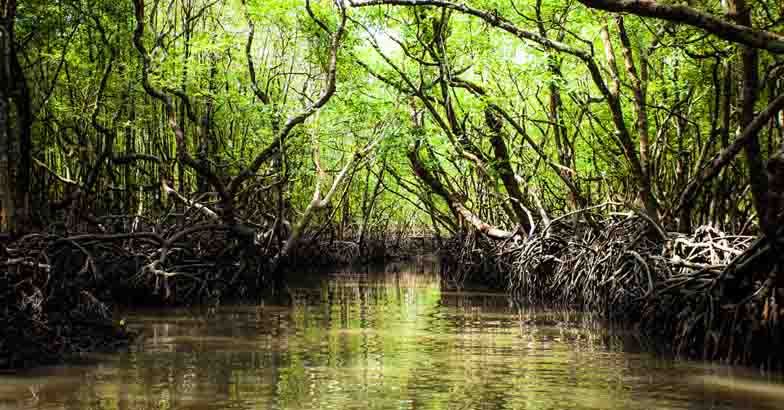 Mangroves, the tropical coastal vegetation consisting of shrubs and small trees, perform a series of balancing functions in the coasts and estuaries.
Photo: Getty images
Mangroves, the tropical coastal vegetation consisting of shrubs and small trees, perform a series of balancing functions in the coasts and estuaries.
Photo: Getty imagesKerala once had extensive patches of mangroves along its west coast. A majority of them were lost following deforestation, human encroachments, soil drifts and natural calamities. Recently, College of Forestry, which is affiliated with Kerala Agricultural University, carried out a bird survey along the central Kerala's mangroves, in collaboration with the state forest department, Centre for Wildlife Studies and some non-governmental organizations of Thrissur district. The survey was a real watershed moment in the way we look at mangrove conservation efforts.
Chettuva mangroves and its biodiversity
The patch of mangroves at Chettuva in Thrissur district spreads over eight acres and is located in the middle of the Chettuva Lake. The island is primarily covered by a species of mangrove called Rhizophora mucronata, which is locally known as ‘Panachi Kandal’. Apart from this, there are other mangrove plants such as Bruguiera cylindrical (‘Kutti Kandal’), Avicennia officinalis (‘Uppatti’), Acanthus ilicifolius (‘chulli’), etc. More than 20 types of land and water birds were also identified from the Chettuva patch.
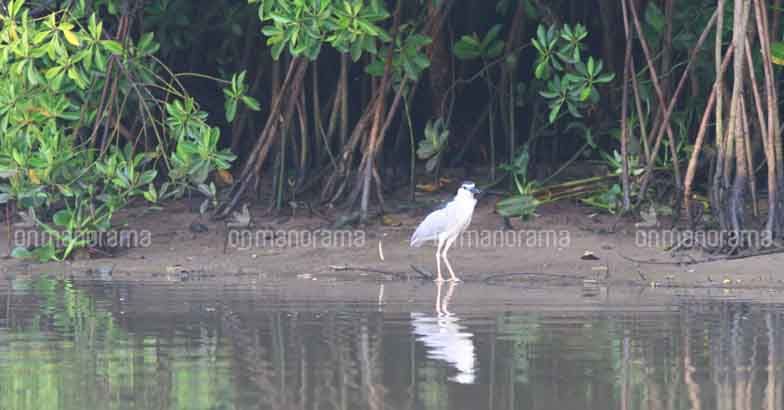 The mangroves act as habitats for numerous species.
Photo: P.O Nameer
The mangroves act as habitats for numerous species.
Photo: P.O NameerThough the black-crowned night heron and little cormorants were found in the largest number, pond herons, egrets, purple heron, grey heron, white ibis, kingfishers and brahminy kites were also spotted in abundance. There is also a good population of common mynas and the house crow. It should be noted that many of these bird species have their permanent nesting, breeding and feeding activities going on in the mangroves itself.
What do the mangroves do?
Mangroves, the tropical coastal vegetation consisting of shrubs and small trees, perform a series of balancing functions in the coasts and estuaries. Its influence ranges from protecting the coral reefs to sustaining the quality of water.
The balancing act
- Coastal protection: Mangrove forests can reduce wave energy, erosion and mitigate coastal flooding. This is particularly relevant in the context of climate change, as coastal flooding and erosion are predicted to increase in severity with the rise of the sea level.
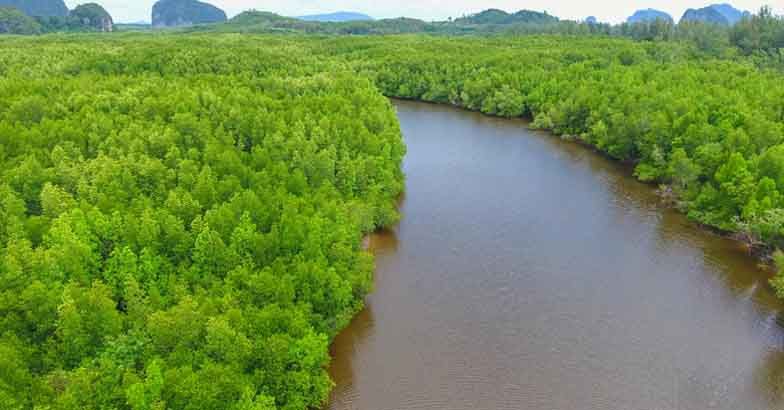 It is high time the center declared mangroves as 'reserved forests,' to reinstate their conservation and sustenance.
Photo: Getty images
It is high time the center declared mangroves as 'reserved forests,' to reinstate their conservation and sustenance.
Photo: Getty images- Refuge for coral reef: Mangroves provide a refuge for coral reef species from climate change. Scleractinian corals, a type of hard corals are found growing in shaded colonies on mangrove prop roots, which provides them a refuge from thermal and acidification stress.
- Habitat and nursery for fish and other marine species: Many commercially important marine species such as snapper, mullets, shrimps, crabs, and sharks utilize mangroves for some or all parts of their life cycle. Mangroves thus support the income of coastal communities and reduce their vulnerability to climate change, by increasing access to sources of income and nutrition.
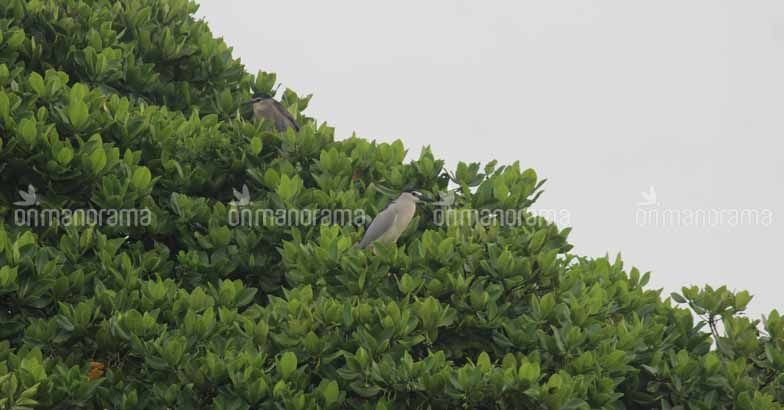 Conservation and restoration of mangroves can contribute significantly to climate change mitigation.
Photo: P.O Nameer
Conservation and restoration of mangroves can contribute significantly to climate change mitigation.
Photo: P.O Nameer- Support livelihoods: Mangroves supply a range of products that support livelihoods. Wood is a particularly important mangrove product, with many coastal and indigenous communities relying on mangroves for timber and construction material, as well as fuel. In addition, non-timber mangrove forest products can provide significant revenue through the provisioning of products such as honey, dye, fodder, herbal remedies, and fruits.
- Biodiversity value: The mangroves act as habitats for numerous species. Mangroves provide habitats for threatened species, including the endangered Bengal tiger, which occurs in the Sundarban mangrove ecosystem and the critically endangered hawksbill turtle.
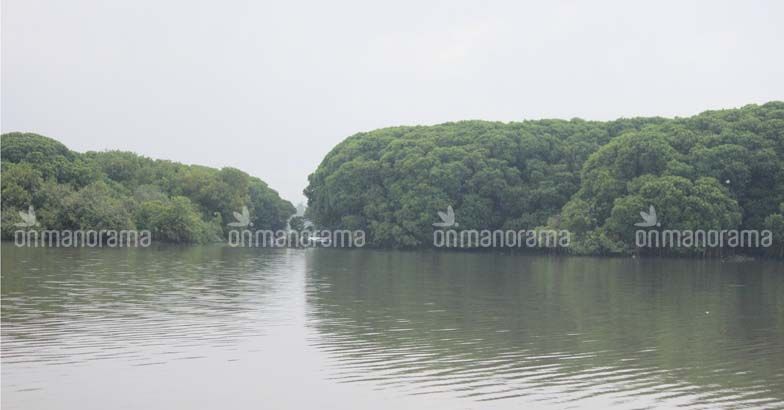 Mangroves contribute to the survival of these adjacent ecosystems and the species they support.
Photo: P.O Nameer
Mangroves contribute to the survival of these adjacent ecosystems and the species they support.
Photo: P.O Nameer- Water quality: Mangroves provide a number of important benefits for surrounding habitats contributing to water quality and nutrient transfer. Mangroves filter and trap sediment from run-off and river water before it reaches adjacent ecosystems, reducing the turbidity of the water and allowing essential light to reach ecosystems. Mangroves, therefore, contribute to the survival of these adjacent ecosystems and the species they support.
- Carbon storage: On an average, the carbon stock of one hectare of mangroves, including soil carbon, is approximately 1,000 tonnes, more than twice the carbon storage of upland forests and five times that of Savannah, meaning mangroves are among the most carbon-rich forests in the tropics. Therefore, despite mangroves constituting less than one percent of the area of tropical forests globally, deforestation in these systems releases a disproportionate amount of carbon into the atmosphere as the carbon protected by mangroves is released. As a result, it is estimated that mangroves may be responsible for as much as 10 percent of all emissions from deforestation globally. Conservation and restoration of mangroves can, therefore, contribute significantly to climate change mitigation. Their ability to trap organic sediment and thus store carbon is why mangroves, among other systems, are referred to as ‘blue carbon’ sinks.
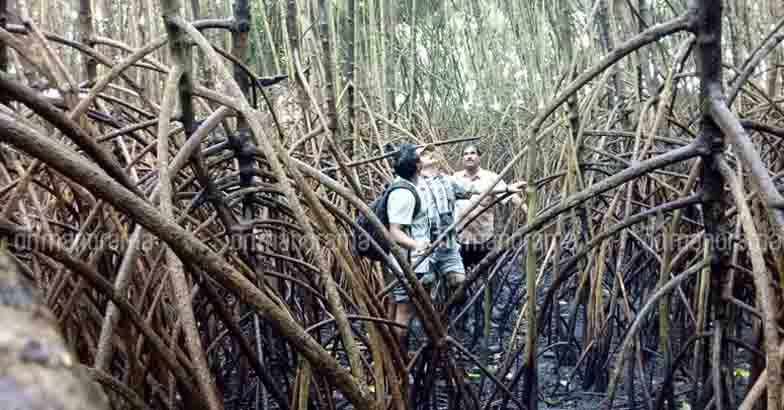 A scene from a bird survey carried out by the College of Forestry along the central Kerala's mangroves, in collaboration with the state forest department.
Photo: P.O Nameer
A scene from a bird survey carried out by the College of Forestry along the central Kerala's mangroves, in collaboration with the state forest department.
Photo: P.O NameerCall for reservation
It is high time the center declared mangroves as 'reserved forests,' to reinstate their conservation and sustenance. Kerala has already taken a step ahead in this campaign and has declared the mangrove patches of Kannur district as a reserved forest. The remaining mangroves of Kerala, including the one in Thrissur, needs a similar kind of constitutional protection to resist extinction. If a single mangrove patch of Chettuva is home for such versatile vegetation, imagine the treasure spread across the state in forms of small, gradually diminishing mangroves. They say the mangrove forest sustains the people who sustain it. So, let’s start working towards the conversation of this interlinking ecosystem that mediates aquatic and terrestrial lives.
(The author is a professor and head of the department at College of Forestry, Kerala Agricultural University)

























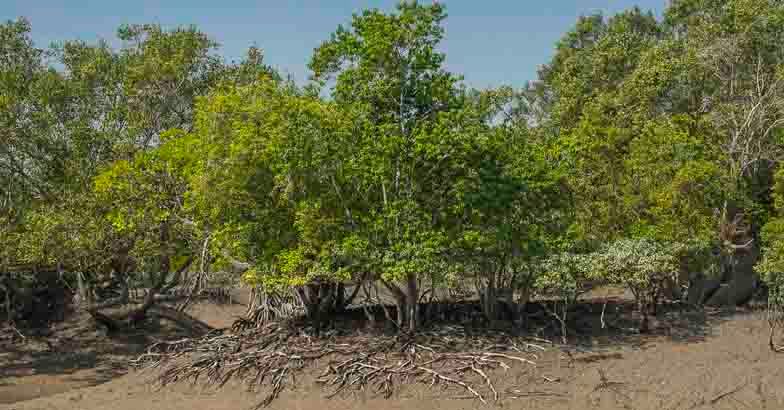 A majority of Kerala's mangrove patches were lost following deforestation, human encroachments, soil drifts and natural calamities.
Photo: Getty images
A majority of Kerala's mangrove patches were lost following deforestation, human encroachments, soil drifts and natural calamities.
Photo: Getty images